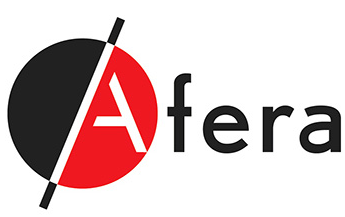
Update: Afera’s Flagship Sustainability Project on translating the European Green Deal for Member Companies
Afera Regulatory Affairs Manager Pablo Englebienne filled Annual Conference attendees in on how we are tackling sustainability opportunities and challenges within the Association’s most important project
Following Afera’s launching of our Flagship Sustainability Project “Translating the European Green Deal to Afera Members” on 1 April 2021, Afera Regulatory Affairs Manager Pablo Englebienne was first up at the recent Conference to update the 100+ attendees on the current status of the Association’s key strategic project. Mr. Englebienne’s was one of 14 presentations addressing circularity spread over 2 days of learning and networking face-to-face, including an Industry panel debate, 7 face-to-face networking moments/activities and an inspiring setting in Valencia, Spain.

Why embark on a sustainability project?
In December 2019, the European Commission presented the European Green Deal (EGD), a strategy defining a set of bold measures to transform the E.U. economy for a sustainable future. Measures in the EGD affect the adhesive tape industry and our society extensively, specifically the chemicals industry, downstream users of chemicals, and especially some specific sectors such as packaging, construction and textiles.
The EGD is the embodiment of the U.N. Sustainable Development Goals (SDGs) introduced in 2015 as part of the 2030 Agenda for Sustainable Development. The SDGs provide a shared plan for sustainable development based on 5 pillars: people, prosperity, planet, peace and partnership. This was expressed in the form of 17 overarching SDGs, which specify principles to be achieved by all actors in society.
Afera’s sustainability mission
The Afera Sustainability Working Group developed a mission statement in 2020:

The pillars from the U.N. SDGs are recognisable in this statement: We are working on sustainable solutions that will improve repairability, reusability or recyclability of the products in which tapes are incorporated, resulting in an environmental advantage. We will generate prosperity by using a rational approach and develop key partnerships to achieve our goals.
Other value chain sustainability initiatives
There are several sustainability initiatives established by different value chains, some of which you may be aware or may be actively participating in already. The 4evergreen alliance is a project of the fibre-based packaging industry to increase recycling of this type of packaging. CELAB is a project of the self-adhesive value chain to develop the recycling of release liner and matrix in a commercially sustainable way. While these 2 are industry-led initiatives, the Circular Plastics Alliance is a broad agreement promoted by the E.C., with participation of industry academia and public authorities with the objective of boosting the market for recycled plastics in the E.U.
How did the Afera Flagship Sustainability Project (AFSP) come about?
The idea for the AFSP came up within Afera’s sustainability Working Group (Sus-WG) at the end of last year as a way of accelerating the pace of the sustainability initiatives being performed and making them more visible to stakeholders. Afera’s Steering Committee was in favour of the initiative, and we launched a survey among our Member Companies to scope out interest.
We further brainstormed in a virtual session in January and agreed on 3 topics of focus. Later in the year, we got in contact with TheCoCreators, which facilitated the process of coming up with a collaborative effort. Over the summer, we prepared a draft stakeholder analysis identifying the relevant parties that should take part in the various workstreams. The SC approved the Project in September, designating the necessary funding to get it up and running.
What is the purpose of the AFSP?
The overarching goal of the AFSP is to translate the EGD to Afera Members. We are setting up 3 technical workstreams to develop concrete approaches to contribute to the EGD: 1) Calculation methods, 2) Waste management and 3) Advocacy. There will be a separate communications platform for broadcasting messages about the Project internally and externally, and the SC will provide support and decision-making when necessary. All these parts are linked by a co-ordination team managing the AFSP.
Workstream 1 (WS1)
The objective of WS1 is to develop harmonised calculation methods to estimate the environmental impact of all types of adhesive tapes placed in the market. In particular, we will focus on providing carbon footprint values for the products in scope, while looking at specific approaches like Environmental Product Declarations, Life Cycle Assessments, and the up-and-coming Product Environmental Footprint.
We will begin with inventorying the methodologies, available data and needs from customers to prepare a data matrix and perform a gap analysis. We will then engage with calculation specialists to fill in the data gaps, to provide ultimately an objective, harmonised method to Afera Members. The Project will not perform calculations on Member products but rather provide the tools and data with which to perform these calculations.
We estimate that we can perform the 2 first work packages in the first quarter of 2022. Furthermore, we aim to have a carbon footprint for all types of adhesive tapes agreed upon by the end of next year.
A preliminary stakeholder analysis shed light into the stakeholders that need to be involved in these processes: Suppliers of raw materials and components can provide data on their products, while some tape manufacturers are calculating CFP related to some of their products. The goal is to agree on a common approach in order to harmonise this within the Industry. Users of tapes can then use the values to calculate the CFP of their products. Along the way, other factors can be taken into account, such as logistics and packaging; this is to be further agreed in the WS.
Workstream 2 (WS2)
The second WS aims to develop strategies with which to improve the management of waste generated by the tape industry. This was a recurrent topic in our discussions and brainstorming sessions. A first step is to inventory waste streams and assess their ecological/economic impact. We will look at approaches within the manufacturing process (cradle to gate) or also involve the use phase (cradle to grave). Finally, we will focus on the most impactful approaches to benefit the value chain of Afera.
Some of the ideas that came up during brainstorming are the recycling of trims and rejects during production, especially if they involve different suppliers; the recycling of release liner, which is being looked into by the self-adhesive label industry within the CELAB project; and the potential recycling of some specific streams or applications of tape, such as surface protection tapes.

Firstly, we will take inventory of the streams that could be relevant for optimisation. We plan to use the approach of co-creation here, as the goal is to find streams where it is possible to exploit a synergistic co-operation along the value chain facilitated by Afera. We will then assess the potential impact of the streams looked at and decide on the one or ones to develop. The goals are to have the focus identified in the first half of 2022 and to develop a solution by the end of 2023.
The preliminary stakeholder analysis revealed the importance of the EHS/product stewardship departments on the supplier side and departments handling the waste management during production downstream in the value chain: tape manufacturers/converters and end users.
Depending on the route navigated, it would be relevant to involve other stakeholders later in the process once a priority has been defined, those such as machine manufacturers, logistics, and waste collectors/sorters/recyclers.
Workstream 3 (WS3)
The last WS will focus on advocacy of the tape value chain in light of the emerging regulatory developments as a result of the EGD.
While the activities of both WS1 and WS2 are very technically oriented, the activities of WS3 are very much at the interface of the Sus-WG, the Regulatory Affairs WG (Reg-WG) and the Marketing Committee, so it makes sense to treat WS3 as separate from those. The focus of the Reg-WG is on ensuring compliance with existing regulations, while WS3’s activity is forward-looking and linked to strategy and business goals, at the same time dealing with sustainability concepts. We envisage that advocacy will need to be linked to interaction with not only regulators, but also suppliers, users, recyclers and other stakeholders.

WS3 will focus on identifying and monitoring emerging regulatory issues of interest, as we are already doing; engaging with other stakeholders with aligned interests, for instance FEICA and Cefic; and drafting position papers and responses to public consultations. These efforts are ongoing on a continuous basis, as regulations are actively being developed and will continue to be beyond 2023.
The preliminary stakeholder analysis revealed a wide array of relevance in all actors in the value chain: sustainability, regulatory affairs, government/public affairs as well as business development, professionals. Furthermore, connection with other associations is key, both at the European (with those of suppliers, peers and downstream users) and national levels.
Communication
The communication aspect of the Project will aim to promote the progress and deliverables of the different WSs to internal and external stakeholders. For this, we aim to use an external communication partner that is specialised in the communication of sustainability topics within the chemicals industry. We envisage contributing frequently to Afera News about developments from the WSs, updating routinely the Sustainability environment at the Afera website, and hosting periodic general meetings of the AFSP, as well as offering webinar and external conference content, in order to inform and share knowledge.
Co-ordination
The last link on the chain is the co-ordination of the Project to ensure the deliverables are achieved. Co-ordination will serve as the oil in the machine, organising the necessary WS meetings, maintaining and drafting agendas, minutes and project documentation, distributing information to the communication team for dissemination, organising general project meetings and liaising with the Afera SG whenever decisions need to be taken. The Project co-ordination will be carried out by Mr. Englebienne in co-operation with Afera Regulatory Affairs Assistant Charlotte van der Voordt.

The way forward
What are the next steps for the AFSP? We kicked off the meetings of the individual WSs in November and have already held 2 rounds of monthly meetings in order to identify key action points per workstream. Former Sus-WG Members and other interested Afera Members are encouraged to choose the WS they would like to participate in, and, as needed, we will populate the WSs further to ensure a critical mass following the stakeholder analysis. We aim to have a first general progress presentation at the end of the first quarter of next year. More information will follow.
Acknowledgements
Mr. Englebienne concluded his presentation by thanking Afera’s Sus-WG for their hard work over the last 18 months—and in particular Martijn Verhagen, the outgoing Sus-WG Chairman, “to whom I am very thankful for his dedication to the WG during this time.” He thanked Afera Members for providing their valuable feedback in the surveys, webinars, brainstorms and virtual meetings. He also recognised Afera Secretary General Astrid Lejeune for her support of the initiative and trust placed in him, Ms. Van der Voordt and the Sus-WG to lead it.
Sponsors
The following sponsors of the 2021 Conference were also thanked for their support:
Download the complete slide presentation of Andreas Groß (Members only)
Go to overview of Valencia Conference topics
Learn more about Afera Membership

